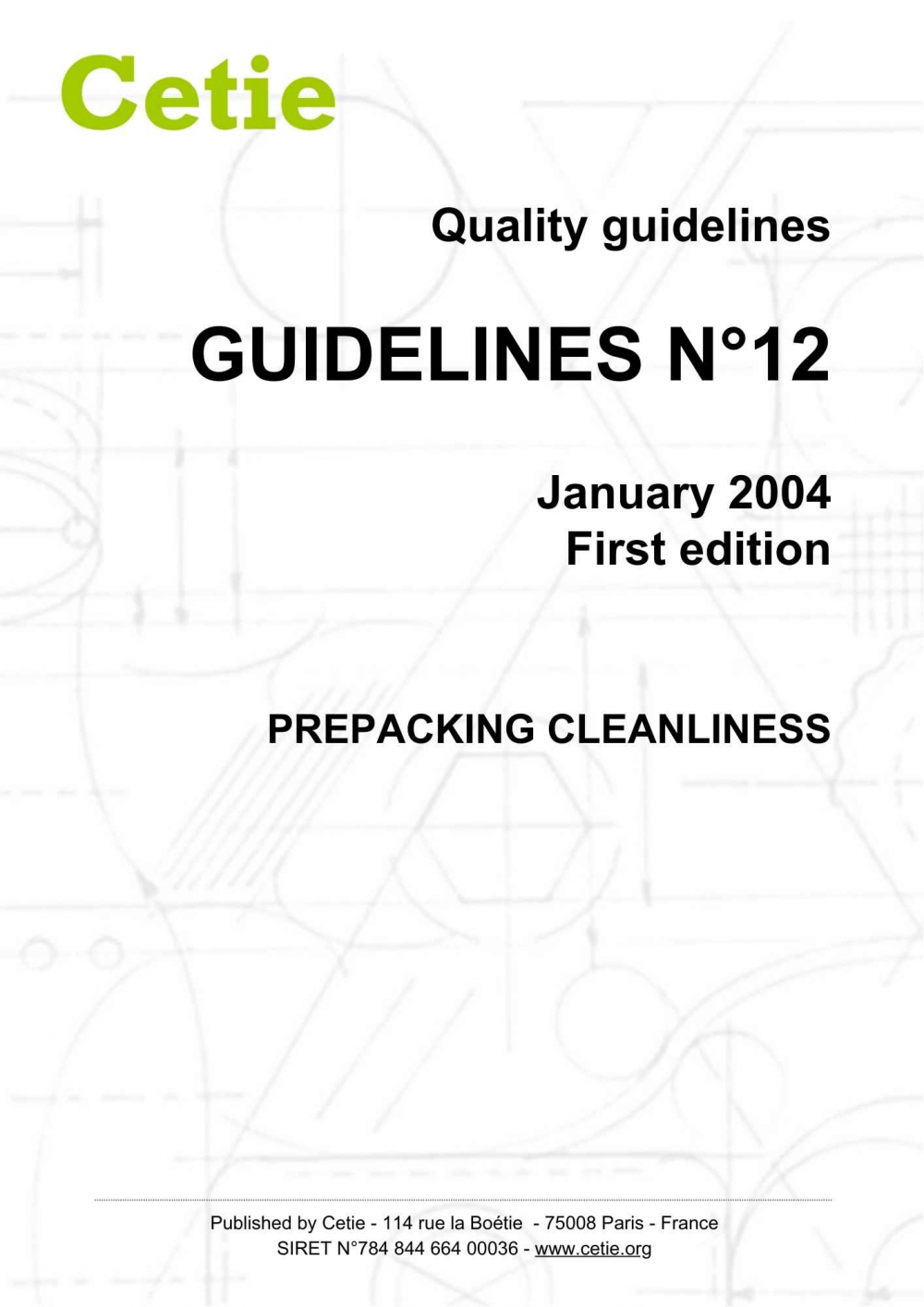Prepacking cleanliness
Scope of application
Table of contents
INTRODUCTION
-
PURPOSE AND SCOPE
1.1 Why This Guide
1.2 Scope -
DEFINITION OF CLEANLINESS
REGULATORY ASPECTS
3.1 Regulations
3.2 Responsibility
PRESENTATION OF THE HACCP METHOD
4.1 The HACCP Method
4.2 Hazard Identification
4.3 Determination of Critical Control Points
4.4 Criticality of Control Points
4.5 Monitoring
4.6 Corrective Actions
4.7 Records
4.8 Audits
HACCP METHOD – APPLICATION TO MATERIALS
5.1 Glass
5.2 Metal Packaging
5.2.1 Metal Can (Aluminum)
5.2.2 Metal Cap (Capping)
5.2.3 Tin Can
5.3 Plastic
5.3.1 Blown PET Bottles
5.4 Cork
ACHIEVING CLEANLINESS
6.1 General
6.1.1 Regulatory Framework
6.1.2 Definition of Hygiene
6.1.3 Product Selection
Basic Standards
Application Standards
Surface Test on Germ-Carrying Doors
6.2 Equipment
6.3 Sequestering Agents and Wetting Agents
6.4 Cleaning Products
6.5 Cleaning Techniques
Annex: Arnold's Table
WATER
7.1 Introduction
7.2 Regulatory Aspects
7.3 Treatment Techniques
7.4 Final Rinsing of Containers
MEASURES AND CONTROLS
8.1 Physical Cleanliness
8.1.1 Objective
8.1.2 Feasible Controls
8.2 Chemical Cleanliness
8.2.1 Objective
8.2.2 Feasible Controls
8.3 Microbiological Cleanliness
8.3.1 Objective
8.3.2 Feasible Controls
PERSPECTIVES AND EVOLUTIONS
BIBLIOGRAPHY
First edition: 01/2004
